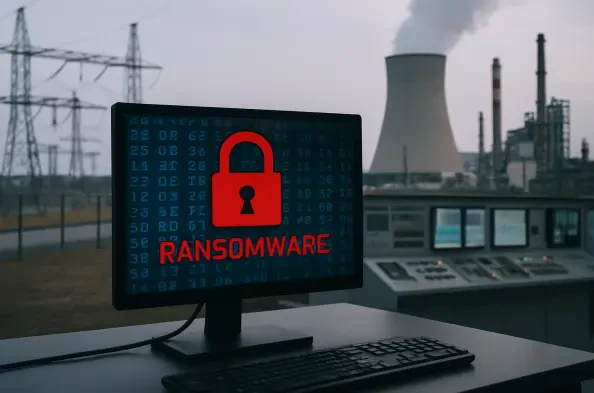In an alarming development shaking the foundations of global security, a sophisticated ransomware strain known as CyberVolk has emerged as a formidable threat to critical infrastructure across multiple nations. Since its initial detection, this malicious software has targeted vital sectors such as power grids, research laboratories, and scientific institutions in countries like Japan, France, and the United Kingdom. What sets this ransomware apart is not just its technical prowess, but also its apparent geopolitical motivations, suggesting a deeper agenda beyond mere financial gain. As cyberattacks increasingly intersect with international politics, the rise of such threats underscores the urgent need for robust cybersecurity measures. This growing menace serves as a stark reminder that digital vulnerabilities in essential systems can have far-reaching consequences, potentially disrupting entire societies. The following discussion delves into the intricate details of this ransomware’s operations and the broader implications for global security.
Geopolitical Underpinnings of a Digital Threat
The motivations behind CyberVolk ransomware reveal a chilling blend of technology and politics, as it appears to selectively target nations perceived as adversaries to Russian interests. Unlike typical ransomware campaigns driven by monetary demands, this strain focuses on disrupting the technological capabilities of specific countries, aligning with broader geopolitical narratives. High-profile targets include Japanese energy systems, French research facilities, and British scientific hubs, indicating a strategic intent to weaken key sectors in these regions. This pattern suggests that cyberattacks are evolving into tools of political influence, where digital disruption serves as a proxy for traditional conflict. The implications are profound, as critical infrastructure becomes a battleground for state-aligned agendas, raising concerns about the stability of international relations in the digital age. Such targeted attacks highlight the necessity for nations to fortify their defenses against threats that transcend mere financial extortion.
Further exploration of this ransomware’s geopolitical angle reveals a calculated effort to undermine trust in the technological systems of adversarial states. By focusing on entities integral to national security and innovation, the perpetrators aim to sow chaos and erode confidence in governmental and institutional responses. This approach marks a shift from indiscriminate cybercrime to a more orchestrated form of digital warfare, where the choice of targets carries symbolic weight. The alignment with pro-Russian sentiments, while not officially confirmed, points to a larger trend of nation-state actors or aligned groups leveraging ransomware for strategic gains. As these incidents multiply, international cooperation becomes paramount to address the root causes and establish norms for cyberspace behavior. The challenge lies in distinguishing between criminal acts and politically motivated attacks, a distinction that could shape future diplomatic and cybersecurity policies on a global scale.
Technical Sophistication Behind the Attack
From a technical standpoint, CyberVolk ransomware demonstrates an advanced level of sophistication that makes it particularly devastating to its targets. Upon infecting a system, it escalates privileges to administrator level, granting full access to critical components while strategically avoiding encryption of essential system directories like those related to core operating functions. This deliberate design ensures the system remains operational post-infection, allowing the ransomware to persist after reboots and maximize its impact. The encryption process employs a dual-layered approach, combining robust algorithms to lock files in a manner that renders recovery nearly impossible without prior backups. Such meticulous planning in its execution flow indicates a deep understanding of system architecture, distinguishing this threat from less refined ransomware variants. The technical prowess displayed here poses a significant challenge to cybersecurity experts worldwide.
Delving deeper into the encryption mechanics, CyberVolk utilizes a two-tiered symmetric encryption scheme that integrates AES-256 GCM and ChaCha20-Poly1305 algorithms for maximum security. A unique symmetric key, paired with a distinct nonce for each file, ensures that even identical data results in unique ciphertexts, thwarting standard decryption efforts. Notably, the final encrypted files lack critical metadata necessary for recovery, a design choice that guarantees data remains irretrievable offline. Even the built-in decryption logic fails due to inherent flaws in handling original parameters, meaning that paying the ransom offers no assurance of data restoration. Post-encryption, a ransom note and altered desktop background pressure victims into compliance, though the flawed decryption process underscores the intent to cause lasting harm rather than facilitate recovery. This level of technical intricacy demands equally advanced countermeasures to prevent and mitigate such attacks effectively.
Strategies for Defense and Resilience
Addressing the threat posed by CyberVolk ransomware requires a proactive and multi-faceted approach to cybersecurity, particularly for organizations within targeted sectors. Prioritizing stringent backup strategies is essential, with an emphasis on maintaining offline, access-controlled copies of critical data to ensure recovery options remain viable. Regular drills to test recovery processes are equally important, as they prepare institutions to respond swiftly and efficiently in the event of an attack. Beyond backups, securing these systems against secondary compromise forms a critical layer of defense, ensuring that attackers cannot target recovery mechanisms as well. This holistic approach shifts the focus from reactive measures to prevention and resilience, acknowledging that post-infection recovery is often not feasible with sophisticated threats like this one. Organizations must adopt a mindset of constant vigilance to safeguard their most vital assets.
Building on these defensive tactics, a broader cybersecurity framework must be implemented to counter the evolving nature of ransomware threats with geopolitical dimensions. This involves not only technical solutions but also policy-level interventions to enhance collaboration between governments, private sectors, and international bodies. Sharing threat intelligence and best practices can help identify and neutralize risks before they escalate into full-blown crises. Additionally, investing in workforce training to recognize and respond to potential vulnerabilities can significantly reduce the likelihood of successful attacks. As ransomware continues to evolve, aligning cybersecurity strategies with the specific motivations and tactics of adversaries becomes crucial. By fostering a culture of preparedness and adaptability, entities can better withstand the disruptive aims of such malicious software, ensuring that critical infrastructure remains protected against digital onslaughts.
Reflecting on a Persistent Challenge
Looking back, the emergence of CyberVolk ransomware marked a pivotal moment in the landscape of cyber threats, blending advanced technical capabilities with geopolitical motives. Its targeted strikes on critical infrastructure in various nations exposed vulnerabilities that demanded immediate attention and action. The sophisticated encryption techniques and intentional design flaws in decryption logic highlighted the destructive intent behind these attacks, leaving little room for recovery once systems were compromised. Reflecting on these incidents, it became evident that traditional cybersecurity measures fell short against such calculated threats. The response from affected sectors emphasized a shift toward prevention over reaction, setting a precedent for how future challenges might be addressed. Moving forward, the focus must remain on developing innovative solutions, strengthening international partnerships, and investing in resilient systems to counter the ever-evolving tactics of cyber adversaries.






